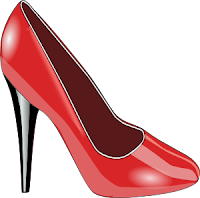Soledad Acosta de Samper
 Soledad Acosta de Samper is considered Colombia's most important female writer of the 19th Century. She was born in Bogotá in 1833 -- the only child of colonel Joaquín Acosta y Pérez de Guzmán, a patriot in during the Colombian War for Independence, and Caorlina Kemble Rou -- a Scottish woman.
Soledad Acosta de Samper is considered Colombia's most important female writer of the 19th Century. She was born in Bogotá in 1833 -- the only child of colonel Joaquín Acosta y Pérez de Guzmán, a patriot in during the Colombian War for Independence, and Caorlina Kemble Rou -- a Scottish woman.From her youth, she was exposed to different countries, languages and ideals. At 12, she left Bogotá to spend a year with her maternal grandmother in Halifax, Nova Scotia, Canada. A year later, she moved with her parents to Paris, where the family lived for four years. While in Paris, she accompanied her father to many literary and scientific meetings -- an opportunity which helped her form many progressive opinions.
She returned to Colombia at the age of 17, and at the age of 22, she married José María Samper Agudelo in 1855. Three years later, she returned with her husband to Paris, where she began to publish under various pseudonyms. Then, she became a foreign correspondent for the "two most important literary magazines" of the day El Mosaico and La Biblioteca de Señoritas.
By 1862, when the family moved to Lima, Peru, Soledad & José María were the proud parents of four daughters. José María had been offered a job as editor-in-chief of the Peruvian newspaper El Comercio. Within a few years, the family returned to Colombia, where José María became a member of Congress -- where eventually, he turned out to be extremely influential (a story for another day).
During this time, Soledad became more outspoken about the rights of women in society. And, in spite of the prejudice against women writers, she was one of the first women in Latin America to become a successful, professional writer. Amazingly enough, her very successful husband, flying in the face of the traditions of the day, supported her efforts.
Her first book (1869), Novelas y cuadros de la vida Suramericana (Novels and Sketches of South American Life), was a collection of her previously published material. Two of her essays from this collection are often still read today and are used as model texts for the exploration of "women's struggles for self in unequal societies."
Next, she wrote a historical novel about José Antonio Galán (1870). Then, from 1878-1881, she founded and published a bi-weekly women's magazine, La Mujer (The Woman). In 1883, she won an award for a history book that she wrote called Biografía de General Joaquín París. In 1884, she published a play and started a new monthly magazine called La Familia.
In all, she went on to publish "29 novels, almost 50 other narrations, and hundreds of articles on various themes."
You can read one of her most famous essays -- in English -- by going to the following Google Books link. The title is "The Mission of the Woman Writer in Spanish America." It comes from a book she published in 1895 La mujer en la sociedad moderna.
http://books.google.com/books?id=AK-F_apKm1IC&pg=PA71&dq=the+mission+of+the+woman+writer+in+Spanish+America+pratt
* Information for this post came from 2 books
Rereading the Spanish American Essay by Doris Meyer
Nineteenth Century Nation Building and the Latin-American Intellectual Tradition by Janet Burke
* Photo by Cultura Banco de la Republica
http://www.flickr.com/photos/banrepcultural/2604969917/sizes/o/

Comments